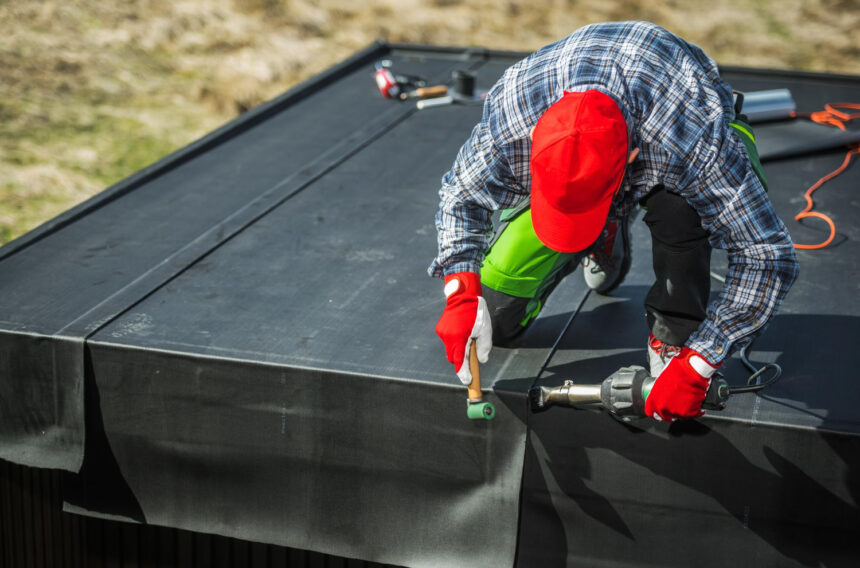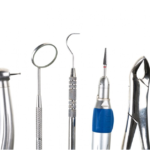EPDM rubber roofing is a popular choice for many building owners due to its durability and weather resistance. This synthetic rubber material is designed for low-slope and flat roofs, offering a reliable solution that can last for decades with proper maintenance. Many find that its flexibility and ease of installation make it a smart option compared to traditional roofing materials.
This type of roofing is not only effective at sealing out water but also presents environmental benefits. EPDM is known for being eco-friendly and can help reduce energy costs. Understanding the different types of EPDM systems available helps homeowners and builders select the right option for their specific needs.
Choosing the right roofing material can significantly impact the longevity and maintenance of a building. By knowing the advantages, installation methods, and maintenance requirements for EPDM rubber roofing, owners can make informed decisions that enhance their properties.
Key Takeaways
- EPDM rubber roofing is durable and designed for low-slope roofs.
- It offers environmental benefits and can lower energy costs.
- Proper installation and maintenance are key to maximizing its lifespan.
Benefits of EPDM Roofing
EPDM roofing offers significant advantages for both residential and commercial buildings. Key benefits include its long lifespan, strong weather resistance, and minimal maintenance needs, making it a popular choice for many property owners.
Longevity and Durability
EPDM roofing is known for its impressive lifespan. With proper installation, it can last 12 to 25 years or more, depending on the thickness of the membrane.
- Thickness Options: Common thicknesses include 45 Mil and 90 Mil, with thicker options providing better durability and longevity.
This material is designed to withstand wear and tear from various environmental factors. It is resistant to tearing and can handle extremes in temperature, remaining flexible even in cold conditions.
The durability of EPDM helps reduce the need for frequent replacements, saving time and money in the long run.
Weather Resistance
EPDM roofs are built to resist harsh weather conditions. They are effective against:
- UV Rays: EPDM maintains its integrity against sun exposure.
- Moisture: The material is water-resistant, which helps prevent leaks.
- Temperature Fluctuations: It can withstand extreme cold and heat without degrading.
This makes EPDM a solid choice for areas with diverse climates. The resistance to hail and strong winds further ensures a long-lasting performance under various conditions.
Low Maintenance Requirements
One of the biggest advantages of EPDM roofing is its low maintenance needs.
- Regular checks are usually enough to keep the roof in good condition.
- Unlike some other roofing types, EPDM does not require frequent sealing or treatment.
The simple care routine can include cleaning debris and checking for any damage after severe weather. Most issues can be addressed with easy repairs rather than extensive maintenance.
This low upkeep factor makes EPDM appealing to many property owners, particularly those looking for a hassle-free roofing solution.
Installation of EPDM Roofing
The installation process for EPDM roofing involves careful preparation and specific techniques to ensure a durable and effective roof. Proper surface preparation, installation techniques, and attention to seaming and detail work are crucial for achieving the best results.
Surface Preparation
Before installing EPDM roofing, the surface must be prepared thoroughly. Start by removing any old roofing material and fixing any damaged areas of the roof deck. This may involve using a toothed roofing spade for removal and patching larger holes with plywood.
Next, clean the roof deck. This involves sweeping away debris, dirt, and dust to ensure proper adhesive bonding. The surface should be dry and smooth. If using insulation boards, secure them properly and make sure they are even and stable.
A stable substrate is essential. If working with an existing structure, ensure it can support the new roofing system without sagging. Lastly, allow any potential moisture to dry out completely to avoid future problems.
Installation Techniques
EPDM installation requires specific methods for best results. Begin by measuring the roof area to cut the EPDM membrane to the correct size. It’s critical to unfold and lay the membrane on the roof, allowing it to relax for a moment.
After placing the membrane, use a water-based adhesive. Apply it in sections and lay down segments of the EPDM on the wet adhesive before adding more. This technique helps secure the membrane firmly.
Brush the freshly laid EPDM with a broom to enhance contact with the adhesive. Ensure that the edges of the membrane are properly aligned and avoid wrinkles during this process. Folding back half of the membrane aids in applying adhesive evenly.
Seaming and Detail Work
Seaming is essential for an effective EPDM roofing system. Once the main membrane is laid, it is important to ensure that all seams are tight and well secured. Overlap seams by at least 3 inches and use a seam tape that is compatible with EPDM for the highest integrity.
Adhesive should be applied to both surfaces of the seam before pressing them together. Ensure a smooth connection to prevent leaks. For areas around vents, skylights, and edges, special attention is needed. Use flashing and trim pieces as required to seal these details securely.
Regular checks on the seams post-installation will help maintain the roof’s integrity over time and prolong its lifespan.
Types of EPDM Roofing Systems
EPDM roofing systems come in different varieties, each designed for specific installation methods and conditions. Understanding these types can help in making the right choice for a building’s roofing needs.
Ballasted EPDM Systems
Ballasted EPDM systems use weight to hold the roofing membrane in place. Typically, large stones or concrete blocks are distributed over the surface.
This method does not require any adhesives, which can reduce installation time. It offers good resistance to wind uplift and is ideal for flat roofs.
However, proper drainage is essential to prevent water accumulation. The thickness of the membrane often ranges from 45 Mil to 60 Mil, impacting its lifespan and performance. This type is usually cost-effective, making it popular for commercial buildings.
Mechanically Attached Systems
Mechanically attached EPDM systems involve fastening the membrane to the roof deck using screws and plates. This method allows for a tighter fit and better stability, especially in windy areas.
Installation can be quicker compared to fully adhered systems. The typical thickness for this type is often around 45 Mil.
While it is suitable for a variety of buildings, care must be taken during installation to ensure that fasteners are securely placed. This can help prevent leaks and enhance the longevity of the roof.
Fully Adhered EPDM Systems
Fully adhered EPDM systems use strong adhesives to bond the membrane directly to the roof deck. This method provides a sleek and smooth surface.
It is particularly useful for sloped roofs and areas prone to high winds. The attachment ensures that the membrane stays in place without the risk of blowing away.
Typically, the thickness of the membrane for this system is around 60 Mil. Additionally, this method can be more labor-intensive and costly compared to the other systems. However, it often results in enhanced durability and longevity.
Maintenance and Repairs
Maintaining and repairing epdm rubber roofing is crucial for ensuring its longevity and performance. Proper care includes routine inspections, attention to punctures, and preventive maintenance practices to keep the roof in good condition.
Routine Inspection
Regular inspections are essential for identifying issues before they become serious. EPDM roofs should be examined at least twice a year, ideally in spring and fall. During these inspections, individuals should look for signs of wear, such as cracks, bubbles, or areas where the membrane appears loose.
Checklist for Routine Inspections:
- Check for tears or punctures.
- Look for standing water or debris.
- Inspect around flashings, seams, and penetrations.
- Ensure drainage systems are clear.
By regularly checking these areas, they can catch small problems early and avoid costly repairs.
Repairing Punctures
Punctures can occur from various sources, including falling debris or improper installation. Even small holes need timely attention. The repair method should extend at least 3 inches beyond the damage on all sides.
Steps to Repair Punctures:
- Clean the Area: Remove dirt and debris around the hole.
- Cut a Patch: Use EPDM membrane or tape, sized appropriately.
- Round Edges: Trim the corners of the patch to reduce lifting.
- Apply Adhesive: Use a strong adhesive to attach the patch securely.
Small punctures might need a simple patch, while larger areas may require professional assistance.
Preventive Maintenance Tips
To prolong the life of an EPDM roof, preventive maintenance is vital. This includes keeping the roof clean and addressing minor issues before they escalate.
Key Preventive Maintenance Tips:
- Clear Debris: Remove leaves, branches, and other materials to prevent water pooling.
- Inspect Flashings: Regular checks can prevent leaks from around pipes and vents.
- Monitor Weather Conditions: Be vigilant during heavy storms, as wind and hail can cause damage.
Following these tips helps maintain the integrity of the roof and minimizes the need for major repairs in the future.
Environmental Impact and Sustainability
EPDM rubber roofing is recognized for its sustainable qualities. It offers advantages in terms of recyclability and energy efficiency, making it a popular choice among environmentally conscious builders and property owners.
Recyclability and Eco-Friendliness
EPDM roofing is designed with sustainability in mind. Many EPDM products can be recycled at the end of their life cycle. This reduces landfill waste and helps in the recovery of raw materials.
- Manufacturing: The production of EPDM often uses eco-friendly processes.
- Lifecycle: EPDM roofs can last up to 50 years, decreasing the need for frequent replacements.
Additionally, advancements in technology have led to improved methods for reusing EPDM materials, further enhancing their eco-friendliness. Increasing awareness about recycling options is supporting the growth of this trend.
Energy Efficiency Benefits
EPDM roofing systems contribute positively to energy efficiency. They are known for their ability to reflect sunlight, which helps in regulating building temperature.
- Heat Reflectivity: Black EPDM can absorb heat, while white or light-colored options reflect sunlight, reducing cooling costs.
- Urban Heat Islands: EPDM roofs can mitigate the heat island effect commonly found in cities, contributing to better overall urban climates.
By improving energy efficiency, EPDM systems not only lower energy bills but also help in reducing overall carbon footprints for buildings. This makes them an appealing option for sustainable construction projects.




